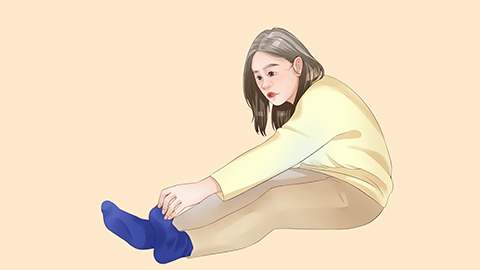Why does the calf still hurt after a leg cramp?
Generally, persistent pain in the calf after leg cramps may be caused by physiological factors such as overexertion and cold exposure, as well as pathological factors such as electrolyte imbalance, muscle injury, and lumbar spinal stenosis. If discomfort persists, prompt medical attention is recommended. Detailed explanations are as follows:
1. Overexertion
Extended walking, standing, or engaging in vigorous exercise can keep the calf muscles in a state of tension, leading to muscle fatigue and cramping. Following a cramp, minor muscle fiber damage may occur, resulting in persistent calf pain. It is important to manage activity levels appropriately, avoid maintaining the same posture for prolonged periods, and perform stretching and massage on the calves after exercise to promote muscle relaxation. Soaking feet in warm water can also help relieve muscle fatigue and reduce pain.
2. Cold Exposure
When the calf area is exposed to cold stimuli, the muscles may spasm due to vasoconstriction and poor blood circulation, causing cramps. If local blood circulation does not recover quickly after a cramp, persistent calf pain can result. It is important to keep the calves warm, add clothing promptly in cold weather, and avoid direct exposure of the calves to air conditioners or fans. Applying heat to the calves can help improve blood circulation and alleviate discomfort when pain occurs.

3. Electrolyte Imbalance
Imbalances of electrolytes such as potassium, calcium, and magnesium in the body can affect normal muscle contraction function, making leg cramps more likely. After a cramp, normal muscle metabolism may be affected, potentially causing persistent calf pain. Maintain a balanced diet in daily life and consume more foods rich in potassium, calcium, and magnesium, such as bananas, milk, and nuts. If symptoms are significant, electrolyte supplements such as potassium chloride sustained-release tablets, calcium carbonate D3 tablets, and magnesium sulfate injections should be taken under a doctor's guidance, along with regular monitoring of electrolyte levels.
4. Muscle Injury
During leg cramps, the intense muscle contraction may cause damage such as muscle fiber tears. Inflammatory reactions at the injury site can lead to persistent calf pain, which may worsen with movement. Reduce calf activity and avoid strenuous exercise to allow the injured muscles to rest adequately. Under medical guidance, topical medications such as diclofenac diethylamine gel, Yunnan Baiyao spray, and blood circulation-promoting analgesic plasters can be used to relieve pain and inflammation and promote recovery from the injury.
Lumbar spinal stenosis can compress nerves that control the calf, leading to abnormal nerve conduction, which may trigger leg cramps. Persistent nerve compression can cause ongoing calf pain after cramping and may also be accompanied by symptoms such as numbness in the lower limbs and intermittent claudication. Symptomatic medications such as celecoxib capsules, mecobalamin tablets, and eperisone hydrochloride tablets should be used under a doctor's guidance. Maintaining proper sitting and standing postures, avoiding excessive strain on the waist, and following medical advice for physical therapy or surgical treatment when necessary are also important.
In daily life, it is important to maintain good habits, avoid excessive fatigue, appropriately exercise calf muscles to enhance strength and endurance, and ensure a nutritionally balanced diet to provide adequate nutritional support for the body.







